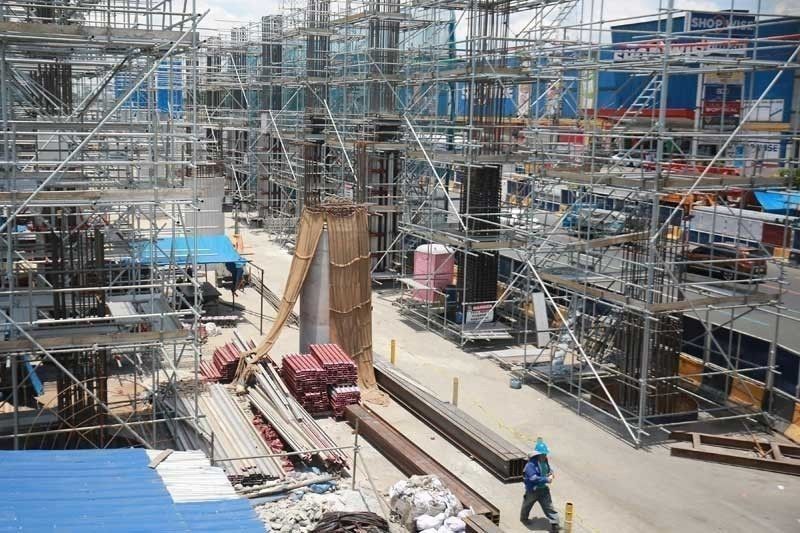Pandemic slows down momentum of flagship infrastructure projects

(Second of three parts)
MANILA, Philippines — The Duterte government may not be able to end its term with a flagship infrastructure project; most of the big-ticket projects now, including the Skyway Stage 3, were launched during the past administrations.
“What is the face of the Duterte administration’s Build Build Build program? None so far. There is no new airport, no major road it can actually call its own,” said a ranking official of a listed company which participates in the government’s Build Build Build program.
In terms of roads and bridges, however, Public Works Secretary Mark Villar said his department has actually completed three times more than what the previous administration has done.
Data supplied by his department showed that from 2016 to 2020, the DPWH has completed P2.5 trillion worth of projects versus the P820 million accomplished from 2011 to 2015.
In terms of projects, DPWH has built more than 5,000 bridges and 26,000 kilometers of roads
“I am quite satisfied with what we’ve done. If you look at the numbers, we’ve completed three times more than any other administration. I am quite happy about it,” Villar told The STAR.
Indeed, Build Build Build committee chairperson Anna Mae Lamentillo said the government has actually laid down a good program that would help the
Philippines have much better infrastructure.
She said that goal is to build 25,343 kilometers of roads, 5,271 bridges and 9,797 flood mitigation structures.
Luzon spine network
The Luzon Spine Network is one of the major projects under the program.
A total of 906 kilometers of high standard highways and expressways in Luzon, which is about twice the 382-kilometer stretch of existing highways in the island, is envisioned to be part of the Luzon Spine Network.
Just like the Skyway, these new road networks will enable Filipinos to be closer to home and spend less time in traffic.
Once complete, those who live in the outskirts of Metro Manila will no longer have to brave an arduous commute to get to their place of work.
Connecting cities
The Duterte administration has a bold and ambitious infrastructure program but there are still roadblocks along the way -- delays in construction due to COVID-19, right-of-way issues, and lack of state budget for infrastructure.
Once in place, though, the program will make Philippine cities more connected.
The plan involves the construction of 25,343 kilometers of roads, 5,271 bridges, 9,797 flood mitigation structures, 141,687 classrooms, and 138 evacuation centers.
When the COVID-19 pandemic hit the country in 2020, the government also resolved to build 557 COVID-19 facilities under the program.
The program was estimated to generate 6.57 million jobs from 2016 to 2020, with a peak of 1.71 million jobs expected to have been created in 2018.
In Luzon, the government envisioned the Luzon Spine Expressway Network (LSEN), which would increase the length of high standard highways in Luzon to 1,040 kilometers (km) from 385 km. The project was seen to effectively reduce travel time from La Union to Bicol in eight hours and 15 minutes.
The northernmost part of the LSEN is the Tarlac–Pangasinan–La Union Expressway, an 89.21-km expressway connecting Tarlac City to Rosario, La Union. The project cut the travel time from the two points to one hour from the previous 3.5 hours.
Linked to TPLEX is the Central Luzon Link Expressway, a 30-km expressway from Tarlac City to Cabanatuan City, Nueva Ecija. From a previous travel time of 70 minutes, motorists can traverse the two points within 20 minutes.
Another expressway up north is the North Luzon Expressway (NLEX) Harborlink Segment 10, connecting McArthur Highway and C3. The 5.58-km toll road seeks to reduce travel time between the cities of Valenzuela and Caloocan to five minutes from an hour.
Also extending NLEX Harborlink Segment 10 is the NLEX Harborlink R10 Exit Ramp--- a 2.6-km four-lane elevated ramp that cuts travel time from the Port Area in Manila to NLEX to about 10 to 30 minutes from the previous one hour.
From the intersection of NLEX to Gen. Luis Avenue, the 3.2-km Mindanao Avenue Extension will connect the areas of Valenzuela, North Caloocan, Quezon City, and NLEX. The extension is expected to cut travel time from Quirino Highway to General Luis Road by more than a third to 20 minutes from one-and-a-half hours previously.
In Bulacan, the government aims to widen Plaridel Bypass Road in order to cut travel time between NLEX-Balagtas to Maharlika Highway to 30 minutes.
In Metro Manila, aside from the Skyway, other projects are the Bonifacio Global City-Ortigas Center Link Bridge Project, which is expected to connect the two business districts through a 12-minute drive. In Makati, the existing Estrella-Pantaleon Bridge will be improved structurally and widened to four lanes, while still connecting Estrella Street at the Makati side and Barangka Drive for the Mandaluyong side.
(To be continued)
- Latest
- Trending






























